Best Native Plants for Peoria, Il
BY AMANDA SHIFFLER | APRIL 30TH, 2023 | ILLINOIS, LAWN CARE, PEORIAThe big-hearted town of Peoria in the middle of Illinois has wide appeal. Sitting right on the banks of the Illinois River, Peoria has a picturesque backdrop that many cities can only dream of.
When you find yourself putting down roots in a city that one national publication dubbed one of the Top 50 Best Places to Live, you might as well embrace the area and landscape your property with native plants. To help you, we’ve compiled a list of the best native plants for Peoria and the surrounding areas.
Included in this article:
- 10 Best Native Peoria Plants
- Considerations When Choosing Natives for Your Landscape
- Local Retailers in Peoria
Native Plants for Your Peoria Yard and Landscaping
Purple Coneflower (Echinacea purpurea)
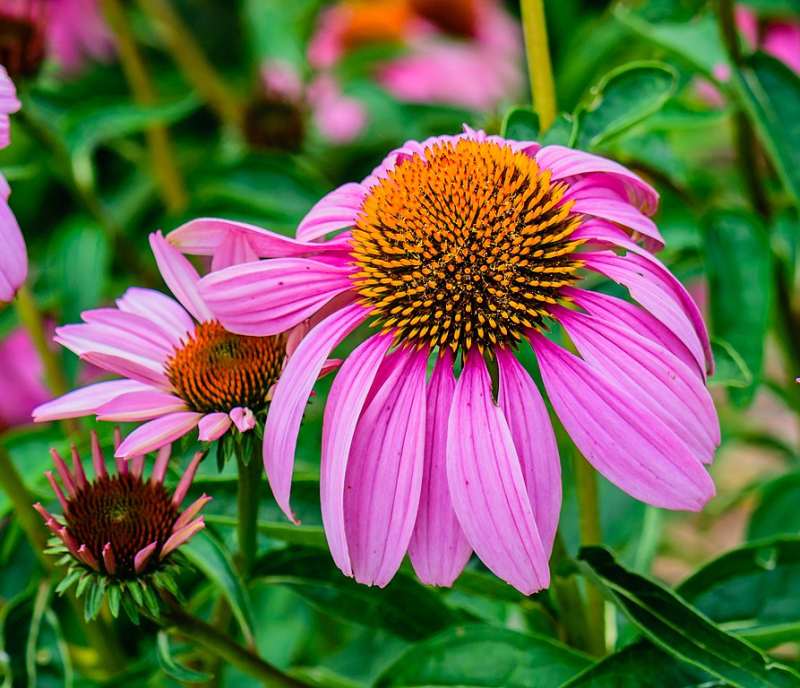
Photo Credit: PumpkinSky / Wikimedia Commons / CC BY-SA 4.0
Purple coneflower resembles daisies, but this native beauty has a large center cone that stands well above the dry, papery petals. It is the most popular type of coneflower grown and one of the first native wildflowers to jump into mainstream horticulture.
This beautiful plant looks stunning when planted en masse and creates a soothing rustle when the papery petals brush up against one another in the breeze. Flowers appear between mid to late summer, and when deadheaded, purple coneflowers may gift you a second round of blooms before the season ends.
Growth Habit: Herbaceous perennial
Mature Height: 2 to 5 feet
Mature Width: 1 to 2 feet
Foliage: Medium green, rough texture
Sunlight Needs: Full to part sun
Soil Preferences: Fertile loam; tolerates clay if dry
Water Requirements: Needs about 1 inch of water per week, including rainfall (may need more during dry periods)
Disease or Insect Problems: Japanese beetles, leaf spot, aster yellows disease
Potential Hazards: None
Cardinal Flower (Lobelia cardinalis)
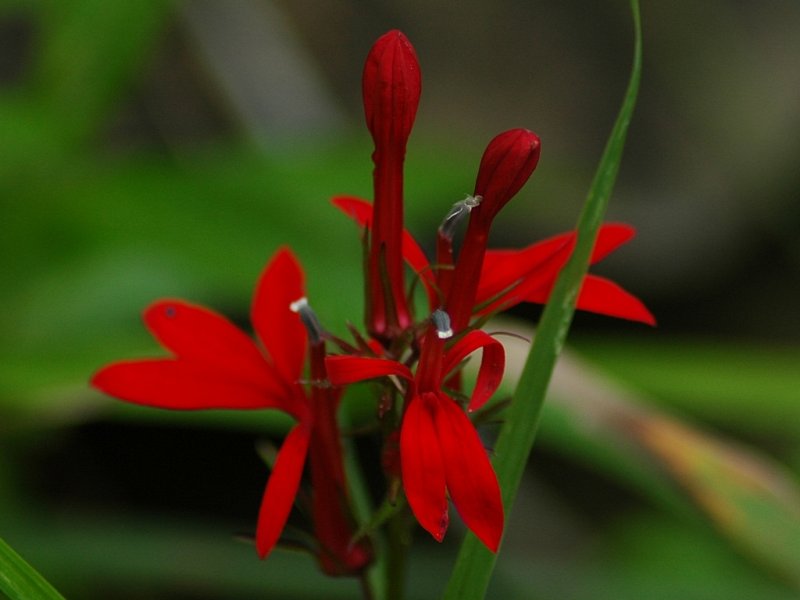
Photo Credit: linnaeus / Wikimedia Commons / CC BY 3.0
The sensational cardinal flower blooms for about a month in late summer, displaying brilliant red flowers that attract hummingbirds and swallowtail butterflies to your garden. Plants get their common name from the bright red robes traditionally worn by Roman Catholic cardinals.
These plants are excellent choices for wet areas in your yard. They naturally occur in wetlands and thrive in full sun and light shade. They aren’t long-lived perennial species, but they self-seed prolifically, so you’ll always have a cluster of cardinal flowers bringing color to your yard.
Growth Habit: Herbaceous perennial
Mature Height: 2 to 4 feet
Mature Width: 1 to 2 feet
Foliage: Dark green,
Sunlight Needs: Full to part sun
Soil Preferences: Loamy, rich, moist soil
Water Requirements: Keep the soil consistently moist
Disease or Insect Problems: Snails, slugs
Potential Hazards: Toxic to humans and pets
Common Milkweed (Asclepias syriaca)
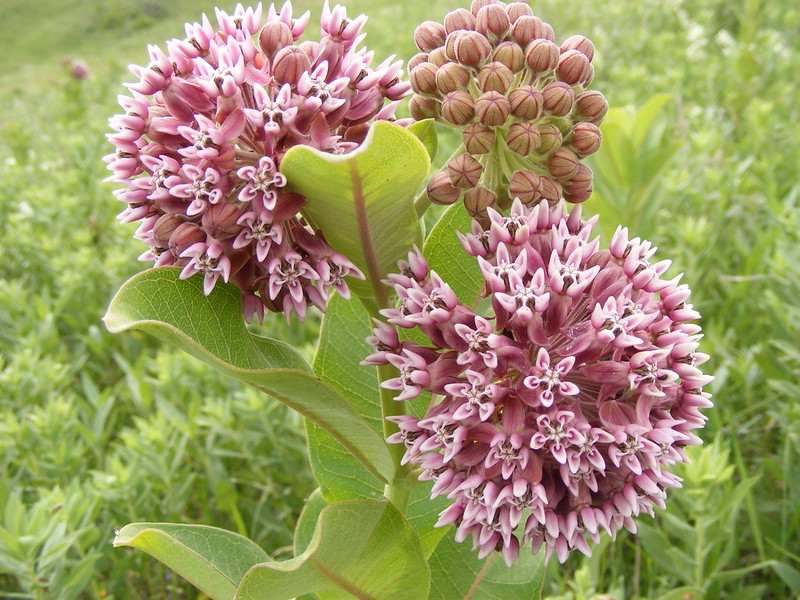
Photo Credit: USFWS Mountain-Prairie / Flickr / CC BY 2.0
Contrary to its name, milkweed isn’t considered a noxious weed anywhere in the United States. This tough wildflower is the only host plant for the endangered monarch butterfly, making it an essential aspect of native habitats.
Milkweeds were once widespread across the prairies of the Midwest, but habitat destruction has severely reduced the plant’s range and numbers. Thankfully, gardeners are increasingly adding them back into their landscapes. They are loved, of course, for bringing in the bold, beautiful monarchs but also appreciated for their fragrant, purplish-pink flowers that appear in late spring or early summer.
However, be mindful that milkweed sap contains alkaloids that irritate everything except the monarch butterfly.
Growth Habit: Herbaceous perennial
Mature Height: 2 to 5 feet
Mature Width: 24 to 30 inches
Foliage: Dark green with fine, soft hairs
Sunlight Needs: Full sun
Soil Preferences: Well-draining
Water Requirements: Needs about 1 inch of water per week, including rainfall; may need more during dry periods
Disease or Insect Problems: Large or small milkweed bugs, swamp milkweed beetles, blue or red milkweed beetles, milkweed aphids, and furry milkweed tussock moth caterpillar
Potential Hazards: Cause eye and skin irritations and are poisonous to pets when ingested
Black-Eyed Susan (Rudbeckia hirta)
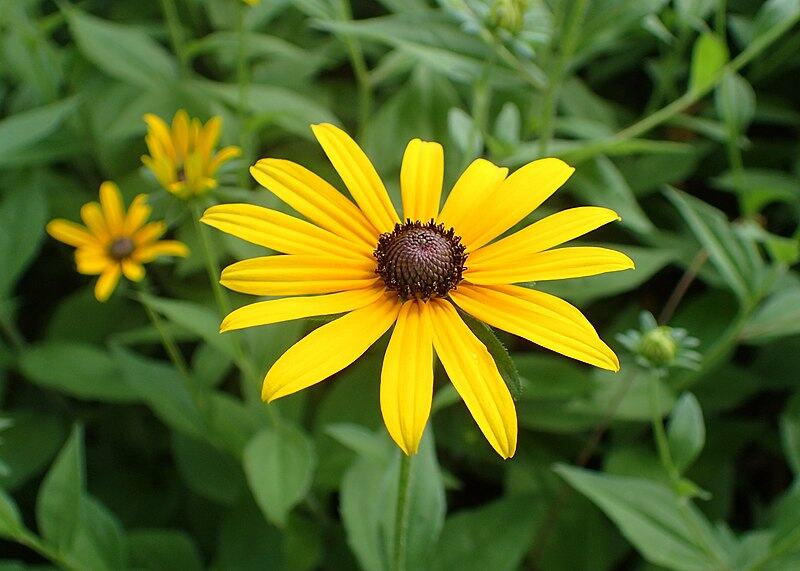
Photo Credit: Krzysztof Ziarnek, Kenraiz / Wikimedia Commons / CC BY-SA 4.0
Black-eyed Susans are among the most easily recognized flowering perennials and a favorite of gardeners. These tough-as-nails plants also look like daisies, with their center discs in deep, rich hues and bright yellow to orangish, oblong petals.
As members of the sunflower family, black-eyed Susans thrive in rocky, infertile soils where most other plants can’t survive. Between this, and their heat and drought tolerance, it’s no wonder you often see them blanketing roadside ditches and open fields across the country.
Be careful when planting them, though. They spread aggressively through underground stems called rhizomes and prolific self-sowing. Their spreading is excellent if you want to fill in a flowerbed, but it can be problematic when planted close to other plants.
Growth Habit: Herbaceous perennial
Mature Height: 2 to 3 feet
Mature Width: 1 to 2 feet
Foliage: Bright green with coarse hairs
Sunlight Needs: Full sun
Soil Preferences: Well-drained, not too rich
Water Requirements: Water when the top 2-3 inches of soil dries out
Disease or Insect Problems: Aphids, slugs, snails, powdery mildew, aster yellows, Southern blight, downy mildew, rust
Potential Hazards: None
Switchgrass (Panicum virgatum)
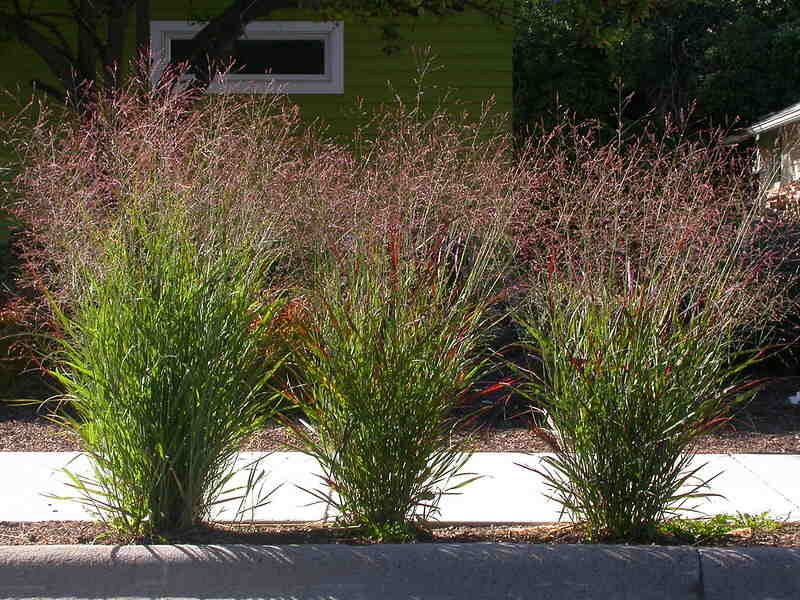
Photo Credit: Matt Lavin / Flickr / CC BY-SA 2.0
Switchgrass is an important native prairie grass that grows well in any soil type and under any moisture level. Their low maintenance needs have given them solid standing as landscaping plants. Growing upwards of six feet tall, they work well as background plantings in flower beds, hedges, or privacy screens.
Different varieties offer you a variety of foliage colors. Switchgrass plants are available with reddish-tinged, steel-blue, or metallic blue-green foliage that takes on a golden glow come autumn. Seed heads are pinkish early in the season and fade into a reddish-brown to add even more interest to fall landscapes.
Growth Habit: Perennial bunchgrass
Mature Height: 3 to 6 feet
Mature Width: 2 to 4 feet
Foliage: Medium green with a prominent midrib
Sunlight Needs: Full sun
Soil Preferences: Well-drained, not too rich
Water Requirements: Needs about 1 inch of water per week the first year, then only during dry periods
Disease or Insect Problems: Very few
Potential Hazards: None
Purpletop (Tridens flavus)
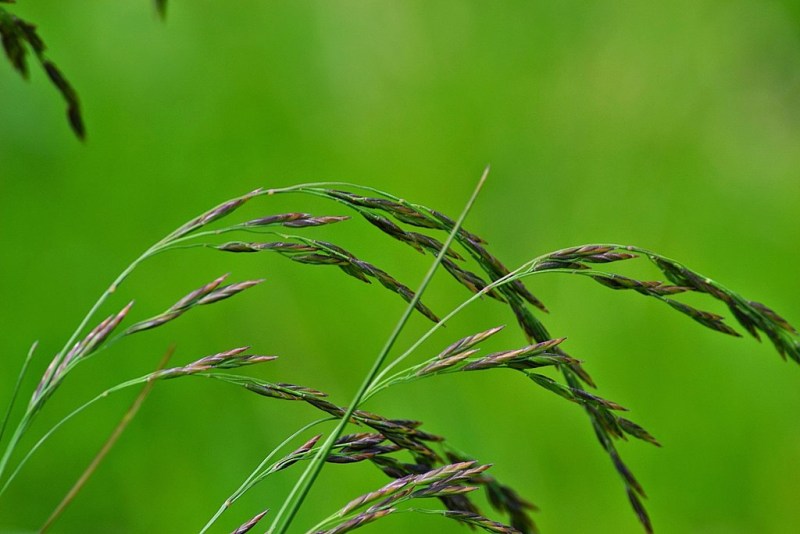
Photo Credit: Joanna Boisse / Wikimedia Commons / CC BY-SA 4.0
Purpletop is a native warm-season ornamental bunchgrass. It grows individually or in tufts and frequently in ditch banks alongside the road. Come late summer, it puts out flower spikes with reddish-purple seed heads that bring rich color to the landscape into November. It’s often called grease grass; the seed heads are covered in an oily, sticky substance.
This native grass does well in part shade and even in moist conditions, making purpletop a fantastic choice for growing under the canopy of larger trees or as a foundation plant against your home.
Growth Habit: Perennial bunchgrass
Mature Height: 3 to 5 feet
Mature Width: 3 feet
Foliage: Green, rough
Sunlight Needs: Full sun to partial shade
Soil Preferences: Adapted to all types
Water Requirements: Needs about 1 inch of water per week the first year, then only during dry periods
Disease or Insect Problems: Very few
Potential Hazards: None
Bottlebrush Grass (Elymus hystrix)
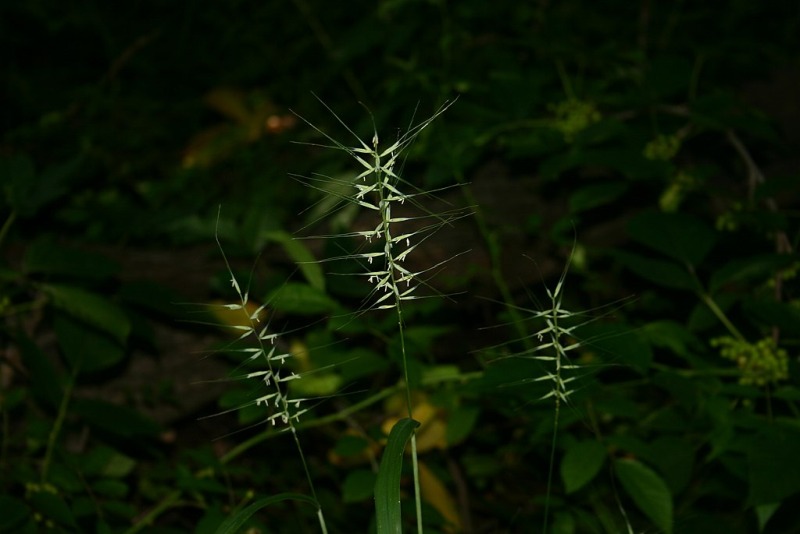
Photo Credit: I, SB Johnny / Wikimedia Commons / CC BY-SA 3.0
Bottlebrush is a cool-season grass that likes cooler temps and grows abundantly during the spring and fall. It’s one of the few native plants on this list that is shade-tolerant and prefers a wooded area over full sun. Plant it under your big oak trees, where it receives a little bit of dappled light to add tremendous interest and texture.
The tall grass has a unique spike arrangement that sets atop bright green blades, making it easily recognizable. As its name states, the spikelets resemble a large-bristled brush used for cleaning bottles. Over time, bottlebrush grass reseeds itself to form small colonies of plants.
Growth Habit: Cool-season perennial grass
Mature Height: 2 to 5 feet
Mature Width: 3 feet
Foliage: Blue-green to grey-green, mostly hairless
Sunlight Needs: Part shade to shade
Soil Preferences: Loamy, well-drained
Water Requirements: Needs about 1 inch of water per week the first year, then only during dry periods
Disease or Insect Problems: Aphids, leaf spot
Potential Hazards: None
Shooting Star (Dodecatheon meadia)
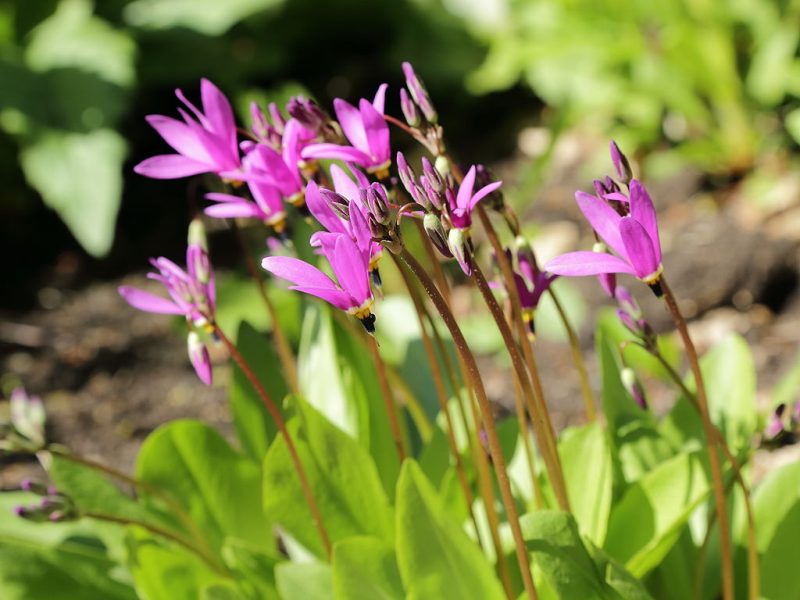
Photo Credit: C T Johansson / Wikimedia Commons / CC BY-SA 3.0
Shooting star plants are a spring ephemeral—a plant that is in full glory in spring but then fades into the background—so they add glorious color to your early-season landscape. This charming native plant has pink, purple, or white flowers resembling shooting stars streaking across the night sky.
Also known as prairie pointer, the shooting star used to grow abundantly through moist wooded areas or rocky slopes in cooler climates. Now it is frequently grown as a garden ornamental and, in 1993, received the Royal Horticulture Society’s Award of Garden Merit.
Growth Habit: Herbaceous perennial
Mature Height: 9 to 20 inches
Mature Width: 9 to 12 inches
Foliage: Emerald to grayish green with a prominent midrib
Sunlight Needs: Partial shade, will tolerate full sun in cooler climates
Soil Preferences: Rocky or sandy, well-drained
Water Requirements: Needs about 1 inch of water per week when flowering, less during the summer
Disease or Insect Problems: Very few
Potential Hazards: none
Prairie Smoke (Geum triflorum)
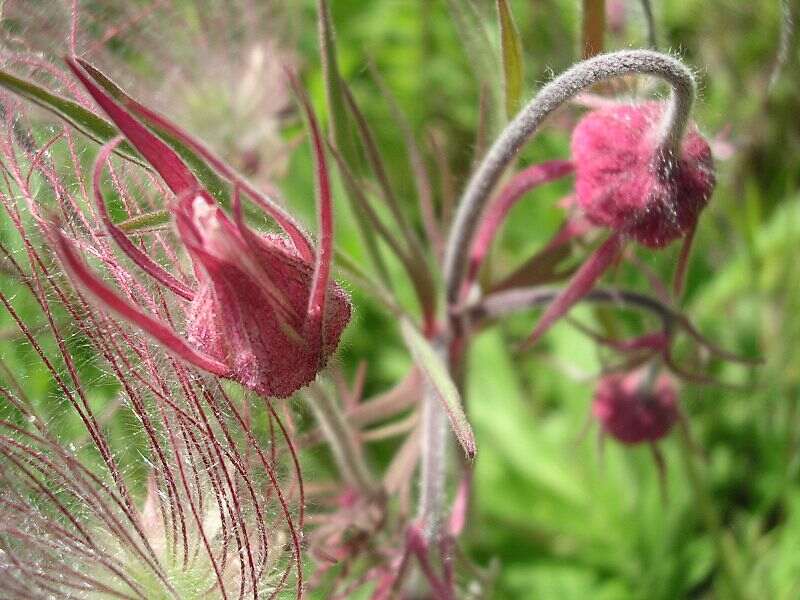
Photo Credit: Jay Sturner from USA / Wikimedia Commons / CC BY 2.0
The prairie smoke plant is one of the earliest spring bloomers on the prairie, and it brings a delicate, unique look when planted in your yard. In late spring, each flowering stem bears clusters of nodding, feathery pink, maroon, or purple bell-shaped flowers in clusters of three to nine. Once fertilized, the nodding blooms transform into arrays of wispy pink, feathery blooms.
Prairie smoke forms a colorful ground cover resembling delicate puffs of smoke from your planting beds. Plants don’t like to be overcrowded by taller perennials, so give them at least 18-24 inches of space.
Growth Habit: Herbaceous perennial
Mature Height: 6 to 18 inches
Mature Width: 6 to 12 inches
Foliage: Semi-evergreen, deeply cut margins
Sunlight Needs: Full sun
Soil Preferences: Tolerant of types, as long as well-drained
Water Requirements: Needs about inch of water per week when flowering, less during the summer
Disease or Insect Problems: Root rot
Potential Hazards: None
Great Blue Lobelia (Lobelia siphilitica)
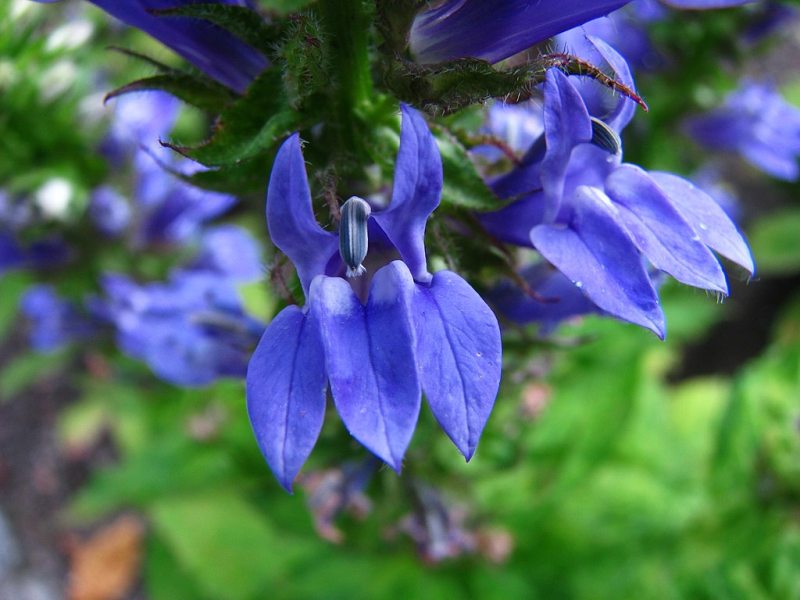
Photo Credit: Agnieszka Kwiecień, Nova / Wikimedia Commons / CC BY-SA 3.0
Great blue lobelia is perfect if you’re looking for a rough, hardy perennial that brings late summer color to your yard. This easy-to-grow native perennial blooms gorgeous, light icy-blue blooms in late summer, drawing in a crowd of bees, butterflies, and hummingbirds.
Plants thrive in moist garden spots and grow well in damp clay soils where other plants struggle. They will grow in sunny places if plenty of moisture is present. When grown in its favored spot of shaded, moist areas, great blue lobelia will gladly spread and multiply to bring you dozens of new plants each spring.
Growth Habit: Herbaceous perennial
Mature Height: 3 to 4 feet
Mature Width: 12 to 18 inches
Foliage: Medium green, somewhat coarse
Sunlight Needs: Sun, part shade, shade
Soil Preferences: Clay, loam, sand
Water Requirements: Keep soil moist
Disease or Insect Problems: Snails, slugs
Potential Hazards: Toxic if ingested in large quantities
How to Choose the Best Native Peoria Plants
All the plants mentioned above are native to Peoria and, in theory, should do well in your yard. However, it is crucial to consider some things when choosing plants for your landscape.
Is your yard in full sun, or are you planting in partial or full-shade spots?
Are you looking to plant in full sun, partial shade, or full shade? Or trying to find a plant that will do well in mixed conditions? You always want to match the sun exposure to the plant’s needs. A plant that needs full sun will struggle in the shade, and vice versa. Since Peoria has a varied climate and plenty of trees, this list contains a nice mix of plants that thrive in different conditions.
What kind of soil are you working with?
Like sun exposure, it’s also critical to consider the soil in your landscape. The soil type directly affects water retention and drainage. It wouldn’t be wise to put a plant needing well-draining soil in a planting spot with heavy clay that holds water. You must also pay special attention to the specific planting area, as your yard can have anomalies with slightly different soil textures.
What size space are you working with?
It’s always a challenge when buying new plants because they tend to look so small for the space you’re working with. Remember, though, you should always consider a plant’s mature size, not how big it is, when you purchase it. Over time that plant will grow, and you don’t want to buy something that will be too large for the space after a few years.
Where to Purchase Native Plants in Peoria
When buying native plants to add to your landscape, it’s always helpful if you can buy them locally. Not only does it support local businesses, but these plants are also usually propagated from parents acclimated to your climate, so they are better equipped to survive your seasons.
Need More Help?
Dreaming of a yard filled with native plants but overwhelmed with choices or trying to figure out what’s best for your yard? Reach out to our Peoria lawn care pros! Our experts are ready and looking forward to helping you make your landscape dreams come true.
Main Photo Credit: Pettingill-Morron House / Mmikhailova / Wikimedia Commons / CC BY-SA 3.0